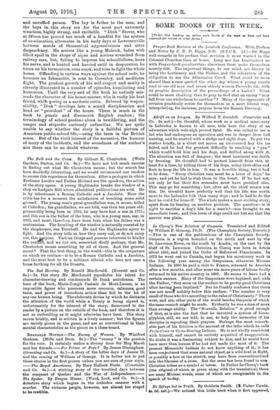Le Clercq's New Relation of Gaspesia. Translated and Edited by
William F. Ganong, Ph.D. (The Champlain Society, Toronto.) —This is one of the publications of the Champlain Society. Gaspesia is a region bounded on the north and west by the St. Lawrence River, on the south by Acadia, on the east by the Gulf of St. Lawrence. Christien le Clercq was born in Artois about 1641, and joined the Order of Reformed Franciscans. In 1675 he went out to Canada, and began his missionary work in the following year among the Gaspesians, otherwise Micmac Indians. In 1680 he paid a visit to France, returned to America . after a few months, and after some six more years of labour finally returned to his native country in 1687. He seems to have had a certain success. Many of the Gaspesians were baptised, and, adds the Father, "they seem on the surface to be pretty good Christians after havingken baptised." But he frankly confesses that there was not muc solidity below this surface: "The number is very small of those who live according to the rules of Christianity." There were, and are, other parts of the world besides Gaspesia of which the same remark might be made. Evidently he was a man of more than average ability. The "Nouvelle Relation" is proof enough of that, as is also the fact that he invented a system of hiero- glyphics, still, we are told, in use, to help the memories of his disciples in repeating their prayers. Perhaps the most remark- able part of his Relation is the account of the tribe which he calls Porte-Croix or Cross-Bearing. Indians. He is not wholly consistent with himself, and cannot be entirely acquitted of exaggeration. No doubt it was a, fascinating subject to him, and he would have been more than human if he had not made the most of it. The present Ifiramichi Indians do not know anything of it; it has been conjectured that some natural object, as a wild fowl in flight, or possibly a bow at the stretch, may have been conventionalised into the likeness of a cross. But the cross has been found in non- Christian tribes as a symbol or totem. In Father Le Clercq's book (the original of which is given along with the translation) there are many Micmac words, some of which are recognisable in the speech of to-day.






































 Previous page
Previous page